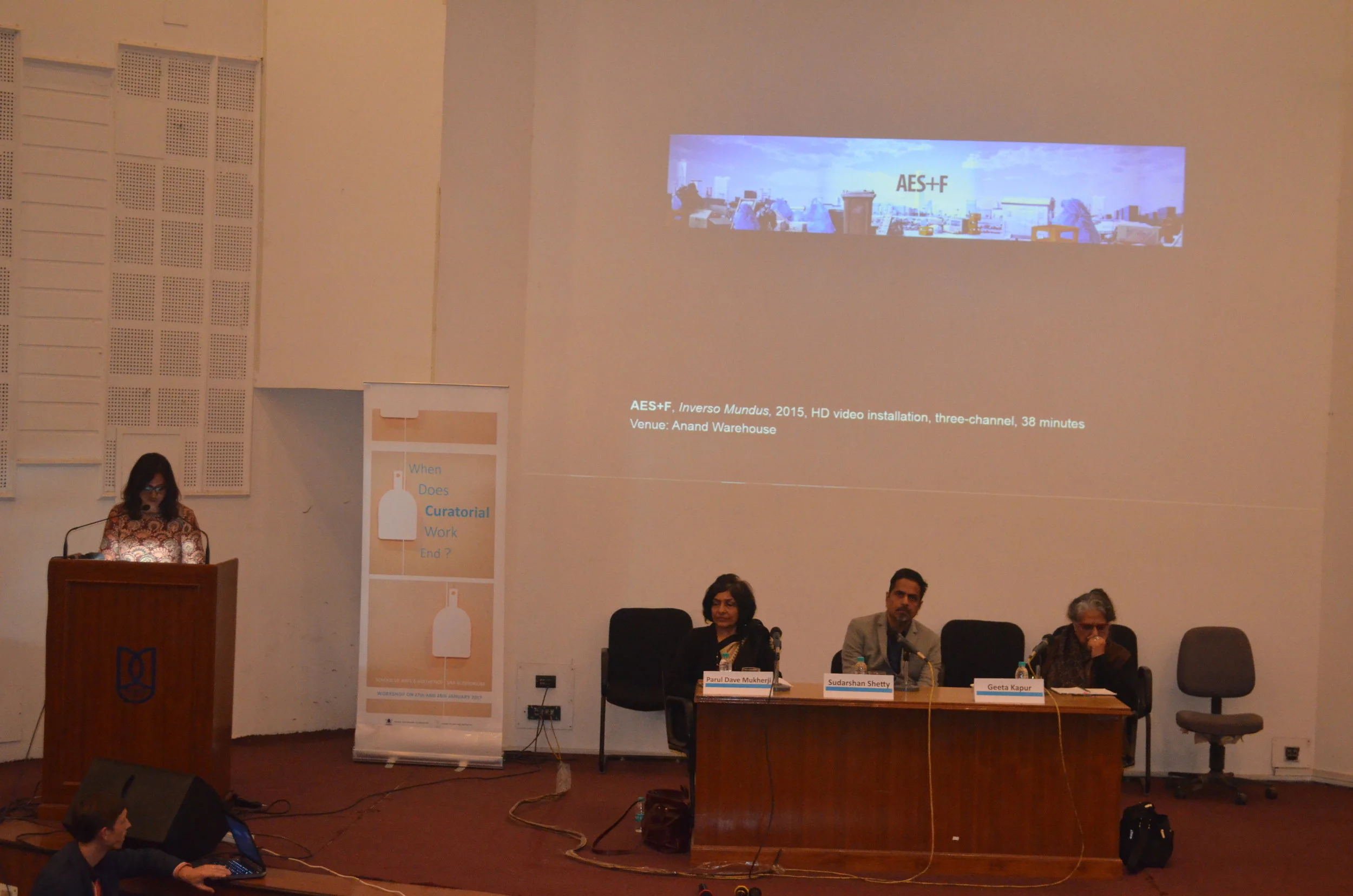Meet the Inlaks Fine Art Awardees of 2017
We are proud to invite five new artistic minds to the Inlaks Shivdasani Foundation family.
Diptej Vernekar
Explaining his approach to art, Diptej says: “My interest largely lies in exploring how spaces, objects and surroundings— which, by nature, are constantly in flux— become a part of one’s identity. How these allow our concerns, questions to build, memories to form. Day-to-day, temporal transformations, occurrences in spaces and surroundings form the basis of my practice— the ideas of flux, ephemeral, impermanence. Moreover, the absurdities of the human condition, personal myths and one’s relationships with these moments in time, objects and spaces— all of which allow for creation of visual metaphors and storytelling. My work brings together fragments of all these, disconnected verses, and stitches them together in an attempt to create visual poems. It plays around with fleeting moments in time and spaces, and the relationship between them, to trigger memories or a feeling of familiarity that a viewer can explore rather than creating a fixed idea.
“The body of my work transcends different mediums in the attempt to re-create these experiences— charcoal, video and sculptural works. Stories can never be recalled in their entirety, only in fragments that later come together in altered forms. I am interested in alteration of memory and what happens when different fragments of it come together through found objects, images or video footage.”
Hailing from a carpenter’s family, Diptej passed his bachelor’s from Goa College of Art in 2012 and master’s from SN School of Arts and Communication.
Moumita Das
Moumita Das explores different textile mediums like resist dye, handloom weaving, knotting, applique, drawing on paper, drawing on cloth with the kalamkari technique, tapestry weaving etc. She says: “Though my works looks very feminist actually I am not much concerned about this aspect. My process of working is mainly Fibre Art as it takes any kind of form I want. For me fibre art is like feeling the thread’s emotion, colour and texture. In my work I sometime use readymade materials like metal sheets, metal pipes, and wire to express my soft and hard feelings through my work.”
Moumita did her graduation, BFA (honours), and post-graduation, MFA, with specialization in Textile Design from Kala Bhavana, Visva-Bharati University, in Santiniketan. During her MFA, she was selected for a semester exchange programme between Visva Bharati University and Ecole Supérieure des Beaux Arts d’Angers (ESBA Angers), France.
Sanket Jadia
A multidisciplinary experimentation with both medium and form is integral to the nature of Sanket’s artistic practice. Each work is conceived in the form of an inquiry, with a conscious attempt to intervene in the existing modes of meaning production. His artistic practice relies on the inherent creative possibilities that art presents; he has evolved particular strategies of intervention through which he poses questions that have no immediate conclusions, but open out multiple and layered possibilities of contemplation. The attempt is to introduce contradictions within the usual scheme of perception, to interrogate reality.
Sanket was artist-in-residence in the third iteration of the ‘Of Games’ residency at the Khoj International Artist’s Association in an artist-curator synergy with Mario D’Souza. His group participations include ILF Samanvay (2016), Indian Summer Festival (2016), Level 01 (2016), Activating Space (2015), Crosstalk (MVA - 2015).
Sanket completed his Master of Visual Arts from Ambedkar University, Delhi (2015) and Bachelor of Fine Arts (Painting) from VNSGU, Surat, (2013). He currently lives and works in Delhi.
Tapan Moharana
Speaking of his work, Tapan Moharana says: “My practice involves natural materials in our surroundings like leaves, branches, clay, a piece of stone. Sometimes I use by-products of industrial activities. This process of involvement with material leads to the adoption and development of skills essential to realize the directions between the relation of forms within and without. My sculpture practice proceeds from a multi-dimensional approach to the social and knowledge-based experience of individuals. To grasp this formal and perceptual plurality, I have slowly introduced ‘other’ materials present in our surroundings.”
Tapan Moharana received his bachelor and master’s degree from RabindraBharati University, Kolkata. He has specialized in sculpture, installation, drawings and printmaking. At present he continues his art practice in different places in India.
Tullika MS
Tulika MS is primarily interested in how one engages with physical environments through memory, and how the ‘reality’ of it is merely a mindful construction. She explains: “Memory acts as a fulcrum between what ‘was’ and what ‘is’- it can perpetuate the piecing together of discontinuous /fragmented memories of experiences with physical spaces. Memory has the power to disrupt the banality of our physical experiences with our immediate surroundings. It questions fact/fiction and how belief systems are often universalized.” Her work is an attempt to represent the contingencies of this phenomenon through disorienting those very same physical spaces visually and/or aurally.
Through this process of ideation, she re-constructs physical spaces in various mediums like wood, found objects, digital prints, paintings, sound and video. Using images as a form of Memory, she utilises collage as a medium to disrupt the contingencies and socio-ecological functions of environments.
Currently pursuing her final year Master’s in Visual Arts at Ambedkar University, Delhi, Tulika’s present engagements have been experiments with digital intermedia. Her engagements more recently also include critical enquiries and theoretical developments in and about contemporary art practices.










